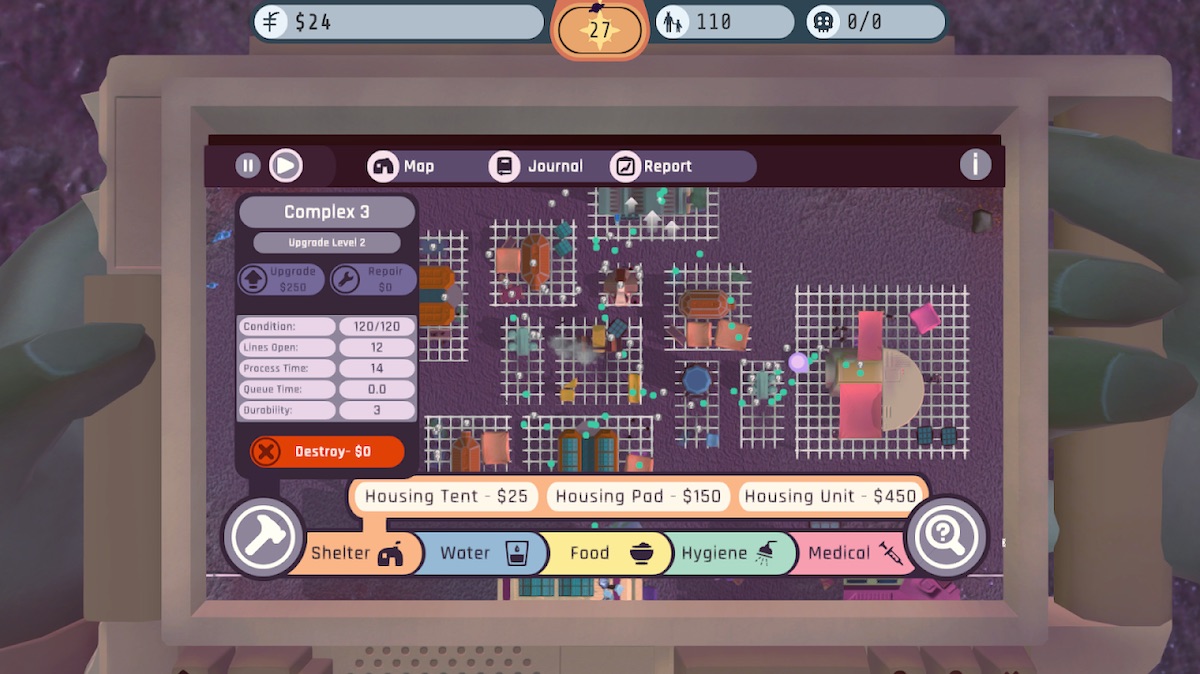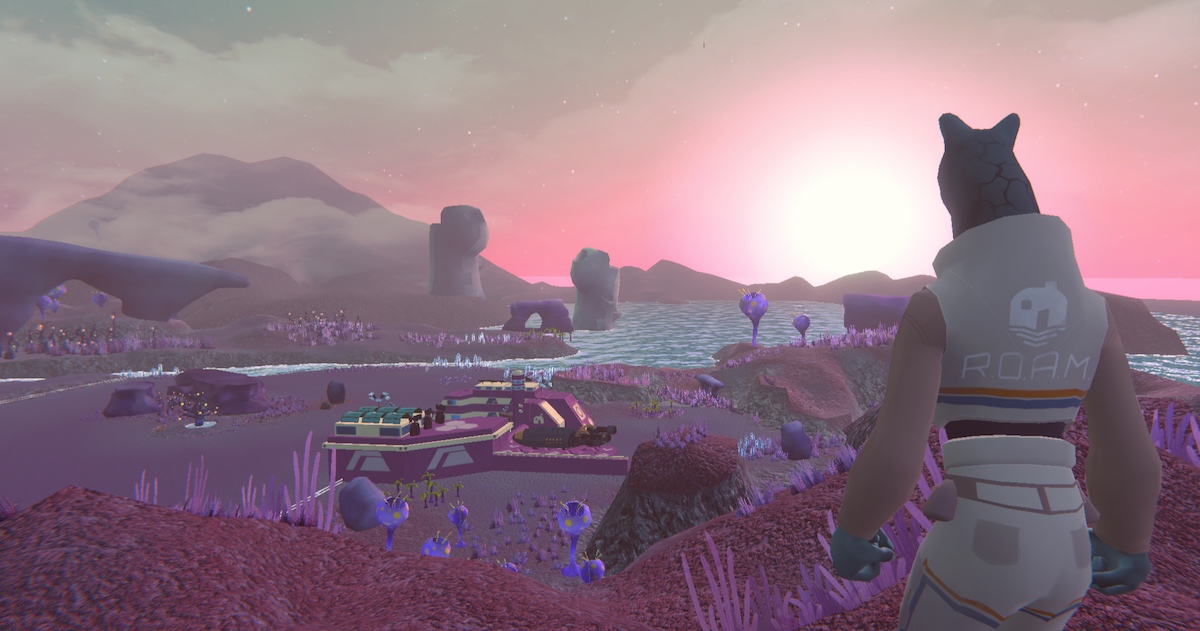A humanitarian video game designed by 18 Drexel University students received national recognition recently when it won Games For Change’s Best Student Game award.
Resilience, developed by Sungrazer Studio with leadership from four seniors, follows a refugee camp manager in another world as they deal with the day-to-day challenges of life in the camp and the struggles that come with international aid systems.
After Resilience’s game design team came together in April 2019, they brainstormed ideas before the game was built over a 10-month period that was divided according to the quarter system of Drexel’s academic calendar.
During the fall quarter of 2019, Resilience’s art team focused on concept art and establishing a cohesive aesthetic while the programming team focused on building out the core mechanics. For the winter quarter, the art team produced models, textures and graphics and brought them in-engine, while the programming team was building out the full game functionality. The spring quarter, ending this June, was the “polish” phase, during which the two teams came together to revise the aesthetics and gameplay and add final touches.
Executive Producer Lily Lauben told Technical.ly that the students felt it was not their place to attempt to accurately portray stories that were not theirs. Using a science fiction theme allowed them to “speak more allegorically about the refugee experience.”
To ensure the galactic refugees’ journeys were reflective of actual refugees, Lauben and her team focused studied various refugee camps. Greece’s Camp Moria has been the home to thousands of Syrian refugees and was the subject of some of Lauben’s most impactful research.
When Lauben first pitched Resilience to her team, Camp Moria held 5,000 people — 2,000 over the number the camp was built to hold. As the game’s production went on, she said, the camp came to hold 12,000 people, and three people had died.
The number of occupants in Camp Moria would quickly rise to 20,000 people.
“The Greek government had pledged to address the human rights violations caused by unsanitary camp conditions, but had no timeline for those promises,” Lauben said via email. “As we were putting the final touches on the game, and the world was shutting down because of COVID-19, I read stories about how the population density of Camp Moria was almost 10 times higher than that of the Diamond Princess cruise ship, and how the refugees living there were at unimaginable risk from the virus.”
As the production process went on, a saddened Lauben hoped that Resilience could help raise awareness for the refugees’ struggles a continent away.
As the game’s creative director, one of Zachary Perry’s primary roles was world building. Perry used the opportunity to develop the names, language and lore used within Resilience. The game’s science fiction story was influenced by refugee camp research, abstracted space knowledge and Perry’s own interconnected narrative. Two video games in particular helped inspire Resilience’s design.
“Outer Wilds and Surviving Mars were among our main environmental and style inspirations that helped influence a large part of our art direction,” he said. “The galactic setting allowed us to create parallels to real-world scenarios (such as dealing with political powers and unpredictable weather) while putting our players into an unfamiliar place and situation.”

Programming Lead Justin Roszko has particular measures of helping refugees in mind for players inspired by Resilience.
“We can donate non-earmarked funds to organizations so they can take care of crises that arise,” Roszko said. “We can help educate our friends and families that refugees are people just like us with their own lives and stories to live and share. We can harass our representatives to properly fund organizations that help refugees and to let refugees enter our country to provide them a home and a place to live. We can and should fight to protect people’s lives that are destroyed by circumstances they can’t control.”
Technical Director Alexander Gallegos also hopes that the game can show players that it is easier to make a positive difference in the world than people may think.
“We hope that our game empowers people by giving them options to support refugees, no matter their means,” he said. “If our game starts a conversation, then it’s done its job.”
Resilience is available for Windows, Mac and Linux.








